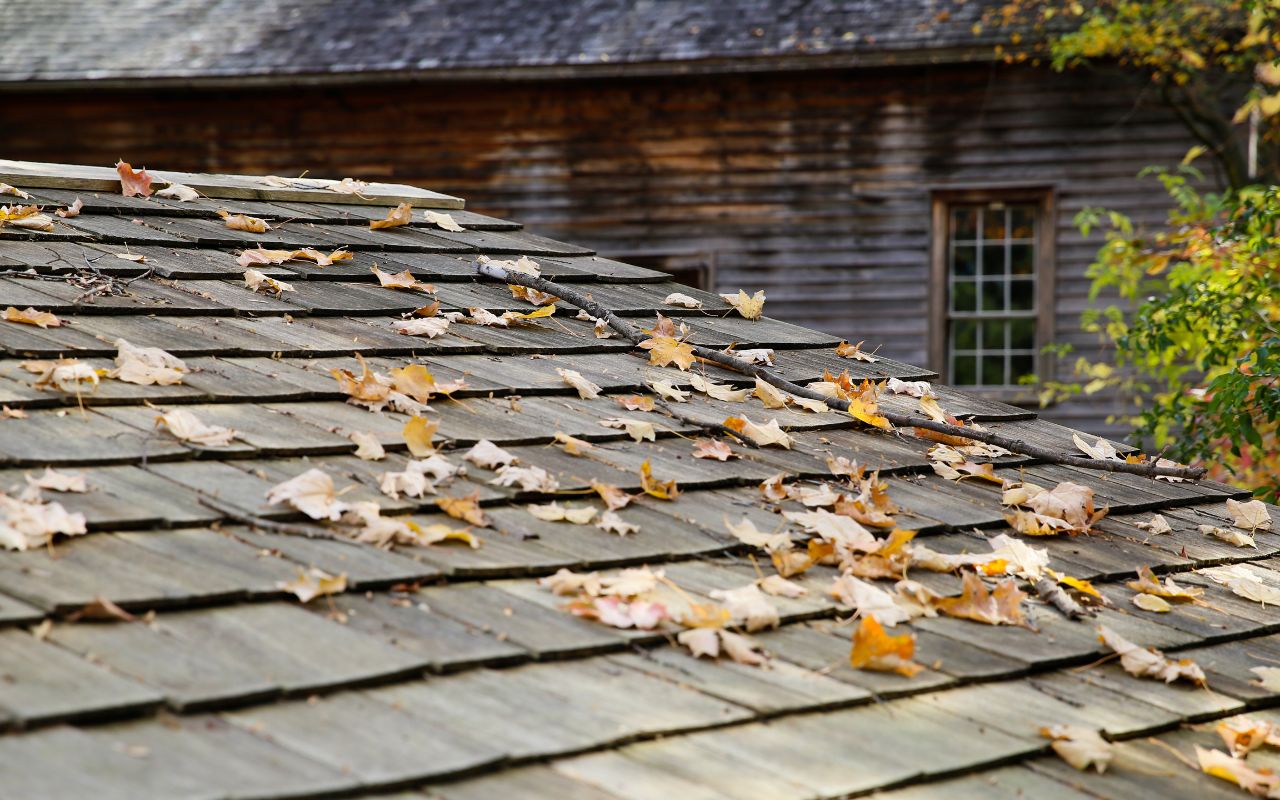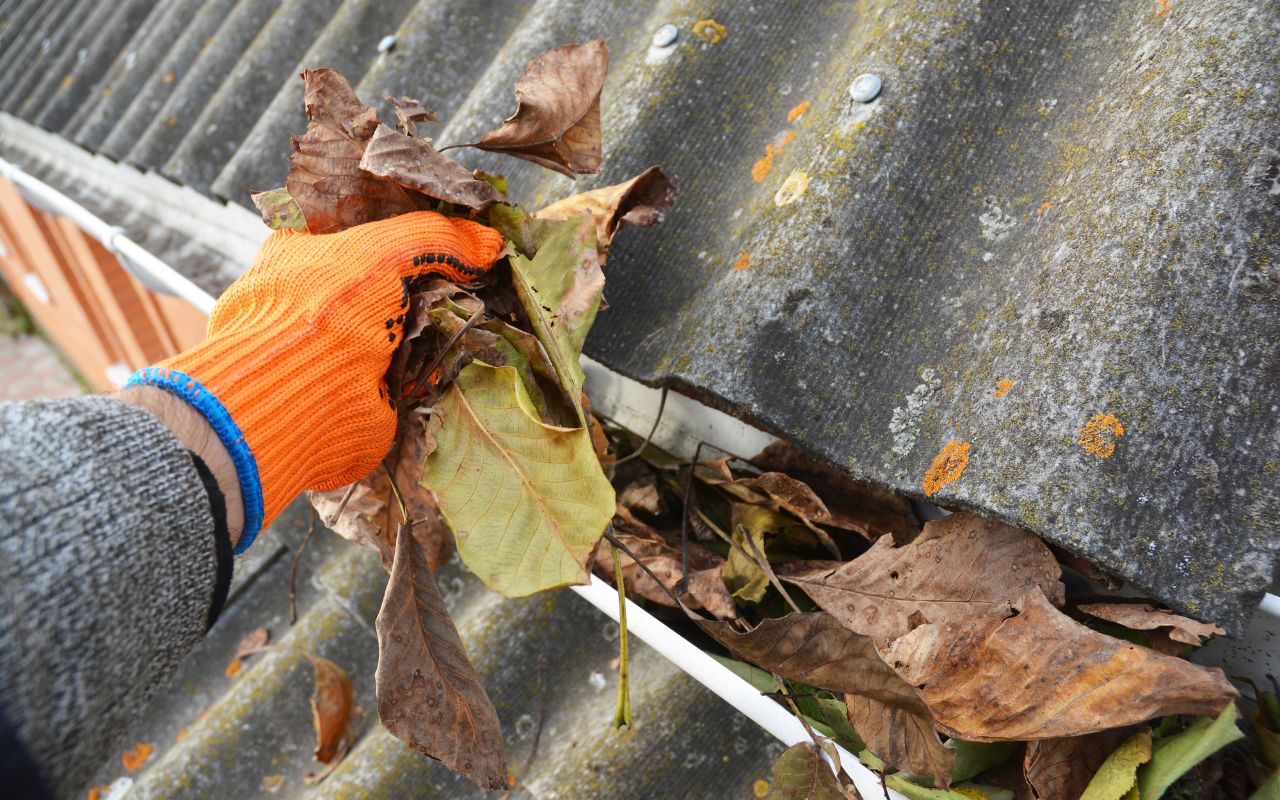Mature, well-cared-for trees on properties are valuable, provide shade, and make any area look more welcoming. However, the closer the mature trees are to buildings, especially houses, the more problems they can cause – particularly tree damage to roofs.
In this article, we’ll discuss how roofs and trees impact each other, some things to consider when it comes to your trees, some issues to watch for, and how to protect your roof while maintaining your trees.
Keep reading to learn more.
Benefits of Mature Trees
Well maintained mature trees not only bring a polished look to a property, but they also increase the property’s value. We are naturally attracted to areas that have a lot of tree cover. Green is a calming color, and there are many studies suggesting even looking at trees can reduce our stress levels.
Mature trees, or trees that have grown to their full height and spread, are great at improving the air quality, providing shade, or protection from winter winds.
Depending on the type of tree, mature trees can provide beautiful spring flowers, colorful fall foliage, interesting branch structures, unique bark, or other aspects that enhance a property.
Read more about the benefits of trees >>
However, trees can cause problems if they are planted too close to a building, driveway, home, or other structure. Branches, roots, leaves or needles, and fruit and nuts can all cause issues.
Many of these issues can be prevented by planting the right tree in the right place, but what can you do when trees and a building need to co-exist?
Roofs, in particular, can suffer some damage when a tree or its branches are too close to a building.
We’ll answer some common questions about trees and roofs below.
 Can trees damage your roof?
Can trees damage your roof?
Yes. Trees can harm your roof in multiple ways.
Tree Branches Can Scrape Against the Roof
Tree branches can move in the wind, scraping layers from the shingles, lowering their ability to provide protection from the elements.
Tree Branches can Fall on the Roof
Even healthy trees drop branches, but if a tree isn’t pruned or has broken branches, they’re more likely to fall. If those branches grow over the roof, they can land there. Smaller branches can clog up gutters, and larger, heavier branches can cause damage.
An Unstable Tree can Fall onto Your Roof
In general, trees actually prevent more storm damage than they cause (see this study from the University of Florida). However, if a tree is sick, damaged, or otherwise unstable, it can fall. Sometimes trees fall on buildings and the roofs become damaged.
Learn how to tell if your tree is unstable or in danger of falling >>
Leaves and Needles can Drop onto the Roof
Deciduous trees drop their leaves every fall, and conifers drop their old needles. If too many leaves and needles fall onto a roof, it can clog gutters. When fallen leaves or needles become wet, it can lead to moss or algae growth, which can further damage your roof.
Fruit and Nuts can Fall on the Roof
Trees that produce fruit, seeds, or nuts, will drop them as well. If fruit falls on a roof, it can rot. Depending on the amount of fruit, seeds, and nuts, more problems can develop. Similar to the issues with fallen leaves and needles, it can turn into moss or algae growth. The fruit can also attract wildlife, some of which are pests and cause further damage.
Trees Can Provide Animals Easy Access to the Roof
Speaking of wildlife, if tree branches are too close to a building, they can provide easy access for wildlife. Mice, rats, squirrels, and other animals may use this their advantage, leading to further roof repair costs down the line.
Trees Can Cast Shade on Solar Panels
If you have solar panels on your roof or plan on installing them, be aware that nearby trees can significantly lower how productive the panels are. Solar panels need full sun, so shaded solar panels are less effective.
Pruning or removing nearby trees may be necessary for solar panels to be fully operational. However, we don’t recommend removing otherwise healthy trees until after you consult with a solar panel installer or a tree care professional.
 How to Prevent Tree Damage to Roofs
How to Prevent Tree Damage to Roofs
Now that we’ve covered some of the issues with trees and roofs, what can we do to solve the issues?
Prune or Trim Tree Branches Near Roofs
Even if a tree is planted a good distance away from a house, branches can still get too close, impacting the roof and the house’s siding.
To prevent damage, tree branches should be 6 to 10 feet from your house and roof.
However, the height of both the roof and the trees can be dangerous if you try to prune the tree(s) yourself. We recommend hiring a professional (like Green Vista Tree Care) to professionally prune the branches near to any roofs. We can also check for any dead or broken branches and remove them before they cause any issues.
When you shouldn’t prune or remove trees yourself >>
Know if any Trees are at Risk of Falling
It’s difficult to discern if a tree is dangerous if you are not trained in arboriculture, but there are some tell-tale signs a tree may break or fall soon:
- The trunk is splitting or cracking
- There are signs of decay
- The ground around the tree roots is saturated, trees can uproot and fall over
- Much of the tree is dead or dying
- The tree is leaning
- There is a significant amount of peeling bark
If you are concerned about the health and stability of your tree, schedule a professional tree inspection.
How to know it’s time to remove your tree >>
Remove any Dead or Dangerous trees
If a tree is dead or showing any signs of falling, remove the tree as soon as possible. Dead and dying trees are more likely to drop large branches, and they could fall at any time.
Schedule your tree removal here >>
Clean Debris from Roofs Regularly
If sticks, branches, leaves, needles, fruit, seeds, or nuts fall on your roof, clean your roof periodically.
Clean your gutters out to keep them functioning properly.
Plant New Trees with Their Mature Size in Mind
If you plan to add new trees to your property, keep in mind that many can grow quite tall (and wide) when they are full grown.
Plant most trees at least 20 to 30 feet from a building to prevent any issues with branches scraping against the roof (and to prevent any issues from the tree roots).
When you choose a tree to plant, find out the mature height and width of the tree to determine if it works in the spot you plan on planting.
We have some resources that might help:
How to choose the right tree for the right place
How to choose the best tree to plant in your yard
Recommended trees for small spaces
Small trees and shrubs suitable to plant under utility lines (this may also work for trees planted closer to a house)
Not all Roof Issues Are Preventable
While following the steps above go a long way in preventing damage to your roof from nearby trees, you can’t prevent all damage.
Under the right circumstances, even healthy trees drop branches, suffer from broken limbs, or topple over completely.
The benefits of trees on your property outweigh the risks. Even if you remove every tree from your property, nearby trees can cause just as much damage.
Interestingly, neighborhoods with fewer trees often suffer more storm damage, whereas those with more trees fare better. This is due to the fact that trees often block houses from wind and debris.
However, maintaining your trees by keeping them healthy, properly watered, mulched, and properly pruned can lower the chances of storm damage.
Contact Green Vista Tree Care
If you have any trees that need to be pruned back from a roof or a tree that needs to be removed, contact Green Vista. We have the skills, experience, and equipment to quickly and safely prune or remove your trees.
Get helpful tips, local news, inspiring stories, and more delivered right to your inbox every month. Don't miss another issue - join today!








